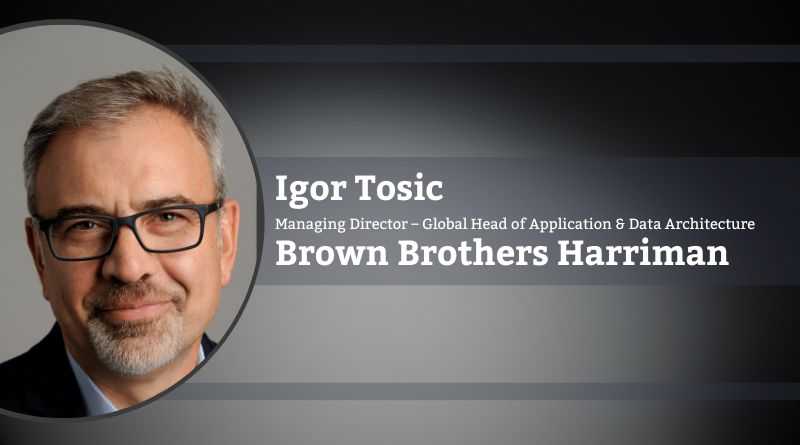RPA is Undead
By Igor Tosic, Managing Director – Global Head of Application & Data Architecture, Brown Brothers Harriman
Introduction:
The recent pronouncements by industry leaders UiPath and Automation Anywhere on the demise of the term “Robotic Process Automation” (RPA) have sparked debates about the true nature of RPA’s existence. In the subsequent discussion, I will delve into the historical context of RPA, its evolution from mainframe screen scraping technologies, and the emergence of its latest variant, named “Integrated Automation,” as another iteration of the same technology. We should question whether the term “zombie-ware” accurately characterizes RPA’s persistent presence over the years. As an Enterprise Architecture principle, I propose shifting our focus from debates about the nomenclature’s demise to exploring the enduring nature of this technology and the pivotal role of Enterprise Architecture teams in navigating evolving tech landscapes.
RPA’s Quiet End and Humble Origins:
The roots of RPA can be traced back to 2012 when Phil Fersht of HFS, collaborating with automation software vendor Blue Prism, envisioned software robots as a threat to traditional low-cost outsourcing. However, it’s essential to contextualize RPA within the broader landscape of automation technologies. Various screen scraping technologies, precursors to RPA, had already established their presence before the term’s introduction, challenging the perception that RPA was an entirely new concept. The recent evolution into “Integrated Automation” further emphasizes continuity, marking it as another variation rather than a revolutionary departure.
The rise of Generative AI further underscores the dynamic nature of the automation landscape, challenging organizations to learn from the pitfalls of RPA and navigate the evolving technological terrain with foresight and strategic acumen.
The initial enthusiasm around RPA promised end-to-end automation and significant Full-Time Employee (FTE) cost savings. However, the utopian vision was tempered by implementation realities. RPA platforms, despite compelling promises, were primarily composed of screen scraping, UI automation, and task scheduling functions. Rather than being transformative, the technology emerged as a Band-Aid solution for legacy or inefficient business processes, facing scalability challenges. The Faustian pact metaphor provides insight into organizations relying on RPA, sacrificing short-term gains for perceived long-term sustainability, and accumulating technical debt. Enterprise Architecture becomes crucial in navigating these complexities, safeguarding against overhyping, and guiding a balanced approach aligned with long-term architectural visions.
Rise of Generative AI: A New Horizon:
As RPA’s star wanes, a new contender emerges on the automation landscape – Generative AI. This technology presents itself as more adaptable and powerful, capable of handling unpredictable processes and unstructured data. Generative AI’s rapid growth, surpassing the entire market revenue of all RPA software within three years, signifies a paradigm shift in the automation realm. RPA platform providers showcase adaptability by changing their marketing strategies to align with the latest buzzwords, raising questions about the ongoing relevance of their offerings.
In conclusion, the narrative surrounding the demise of RPA unveils a complex web of historical context, promises, and realities. The era of RPA, though seemingly over, serves as a valuable case study for Enterprise Architecture teams. Navigating the naming of various technologies and the underlying landscapes requires a process-centric approach, guided by long-term architectural visions. As we embrace the future, Enterprise Architecture remains the compass, steering organizations away from hype-driven pitfalls and ensuring the seamless integration of transformative technologies. The rise of Generative AI further underscores the dynamic nature of the automation landscape, challenging organizations to learn from the pitfalls of RPA and navigate the evolving technological terrain with foresight and strategic acumen. As the scrapbook on the term RPA is closed, the lessons learned become guideposts for preventing greed and hype from undermining the potential of the next generation of technologies.

